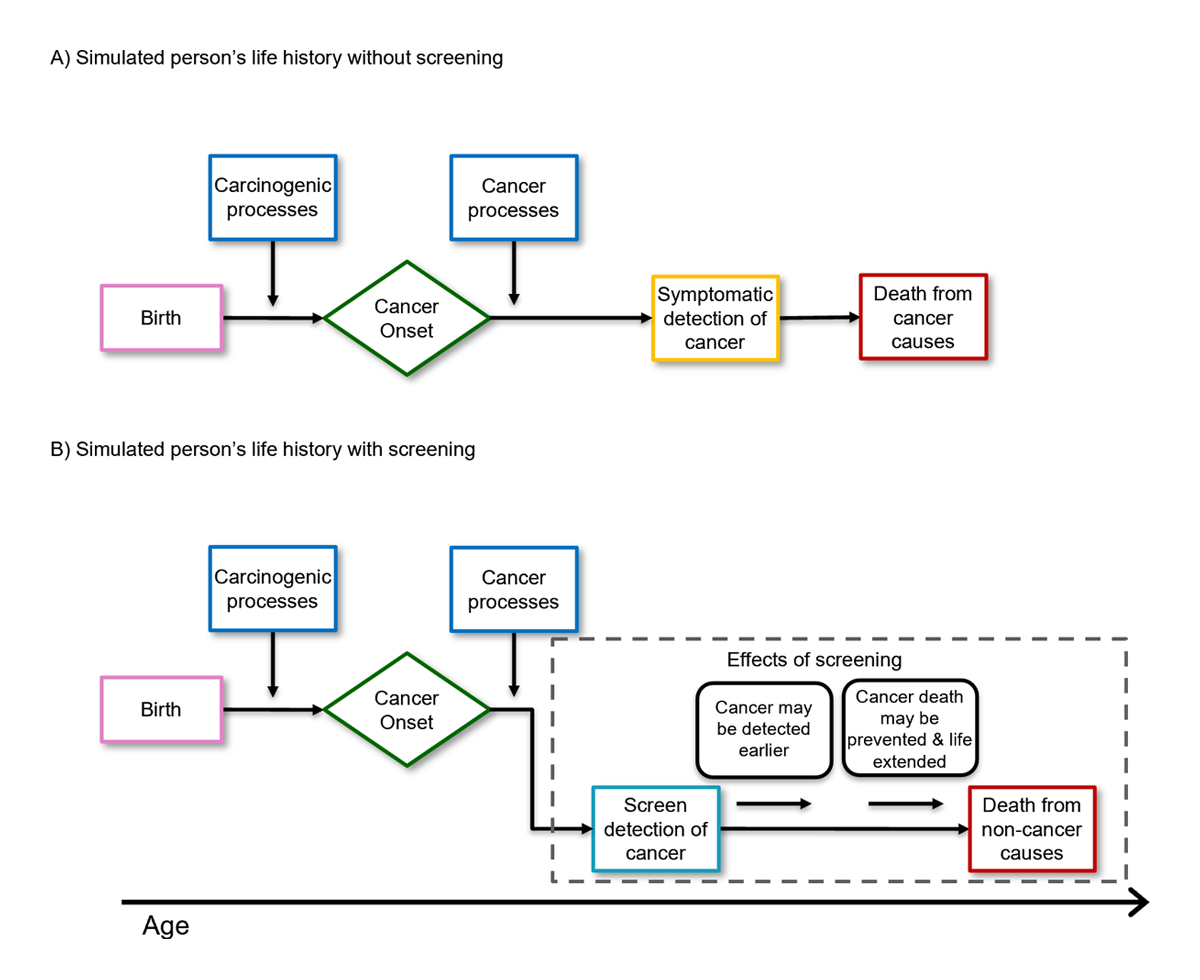Counterfactual Analysis
One advantage of simulating individual life histories is that the models can simulate a range of cancer outcomes for the same person under alternative scenarios (i.e., counterfactuals). Panel A of Figure 3 shows the life history of a simulated person when no screening occurs. At birth, this person is free of any diseases. However, a small cancerous tumor develops at some point—this represents the onset of cancer. At first, this cancer may not cause any symptoms and the person may be unaware that he or she has cancer. Without screening, the cancer may progress further and eventually cause symptoms, for example due to metastases, leading to a clinical diagnosis. In this simulated example, the person eventually dies due to the cancer.
Panel B shows the life history of the same simulated person who undergoes screening. If the person attends screenings, the cancer may be detected at an earlier point when treatment has a higher chance of success. In this example, death due to cancer is prevented and the person’s life is prolonged due to the earlier detection and successful treatment of the cancer: he or she dies at a later date from causes other than cancer.
Panel B shows the life history of the same simulated person who undergoes screening. If the person attends screenings, the cancer may be detected at an earlier point when treatment has a higher chance of success. In this example, death due to cancer is prevented and the person’s life is prolonged due to the earlier detection and successful treatment of the cancer: he or she dies at a later date from causes other than cancer.
Simulated Individuals

Example simulated individuals with and without a screening intervention.